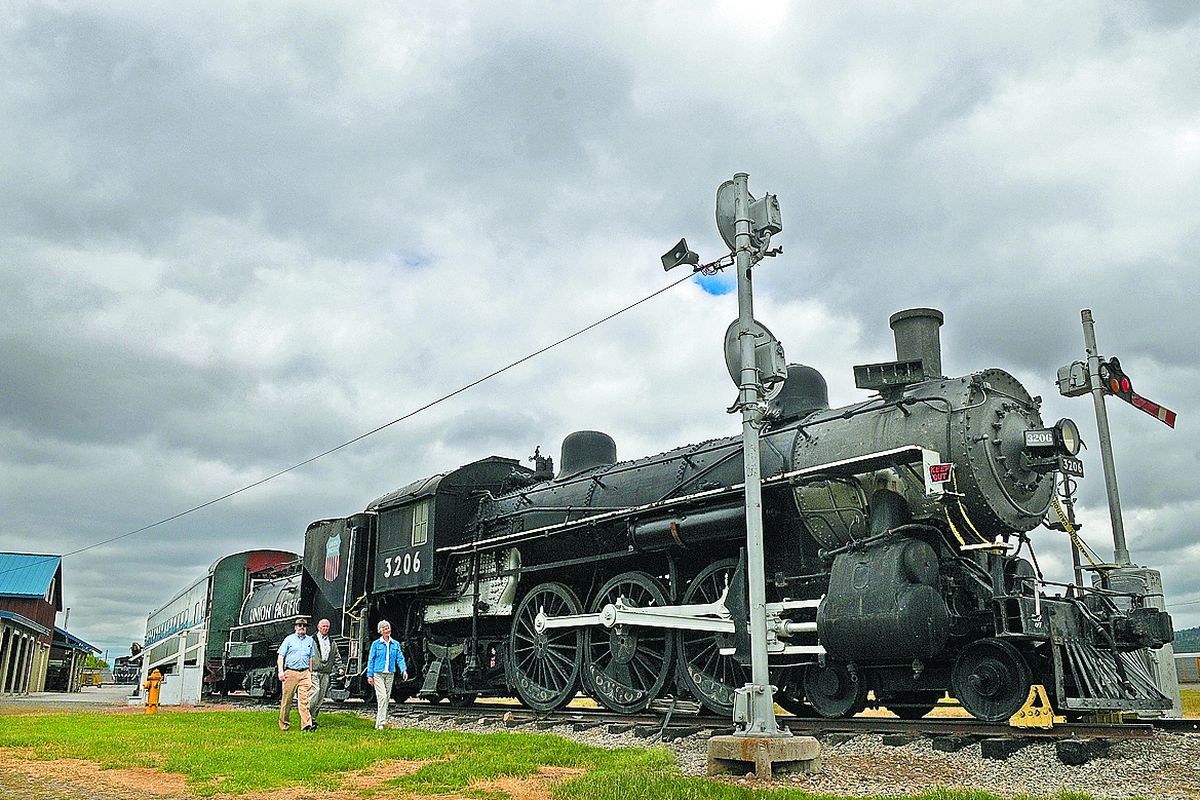Inland Empire Railway Historical Society plans open house
Group trying to raise funds to move

The majestic visage of the mighty steam engine. The rumble and roar of the cars speeding down the track. The thrill of getting a wave and a blast of the whistle from the engineer. Trains have enthralled many children for decades, and for some that fascination goes with them into adulthood.
This weekend both kids and adults will have the opportunity to take an up-close look at trains, as the Inland Empire Railway Historical Society hosts its fourth annual open house at the Spokane County Fair & Expo Center.
Event organizer Donna McMackin said, “We’re going to have some hands-on exhibits including a Make It and Take It craft table for kids.” In addition, there will be souvenirs, door prizes, and food.
But of course the main attraction will be the trains. A couple of model trains will be up and running and for bigger fun folks can take a ride on the gasoline-powered 2-foot gauge train, as well as tour the museum train.
The museum train features five cars, plus locomotive and tender. IERHS librarian, Jerry Fey, said the steam locomotive built in 1904, spent its career in the Inland Northwest before being retired in the 1950s.
Also on display is a Great Northern wooden caboose. Club president John Simanton said, “It dates from 1943, after steel cabooses were standard, but it was made during World War II when there was a steel shortage.”
The group is also restoring a 1906 Spokane street car. “It’s the last remaining Spokane streetcar,” said longtime member Mike McMackin.
He hopes that people will want to learn about the historical significance of the railroad in the Inland Northwest. McMackin said, “I was told in 1880 Spokane’s population was under 10,000. In 1890 after the completion of the Northern Pacific transcontinental rail line, Spokane’s population was over 100,000.”
The railroads brought people, jobs and prosperity to the Northwest. McMackin said in the midst of the Depression, Great Northern had shops in Spokane that employed an estimated 300 workers. “Railroads are still the cheapest way to move freight,” he added.
For the IERHS, the open oouse is more than just a way to educate the public. Five years ago, after more than 30 years at the fairgrounds the group was asked to move. Donna McMackin said, “We started having the open house to help generate funding for the move.” The Society purchased 30 acres near Reardan and has been steadily working on the site.
While disappointed that the move will take them out of Spokane, Fey said they are pleased with their new location. “We’re right next to a branch line,” he said. “Our dream is to someday run excursions along that line.”
It’s no easy task to prepare for a move of this magnitude. Simanton estimates the group has 100 members, 30 of them active. He said, “We don’t have many young, athletic types, but we’re out there laying track.”
Group members agree that the work of documenting, collecting and maintaining the legacy of the railroad in the Inland Northwest goes beyond the lure of the mighty engines and classic cars. Donna McMackin said, “All that history will be lost if we don’t try to preserve as much of it as we can.”